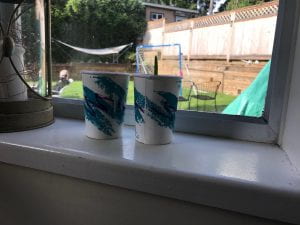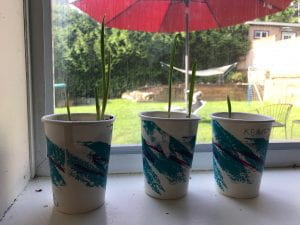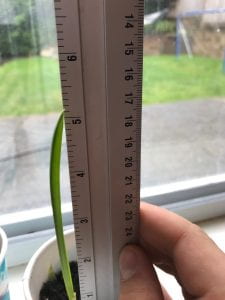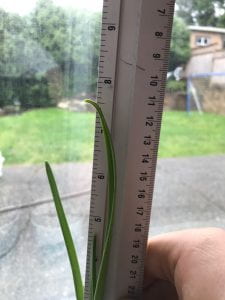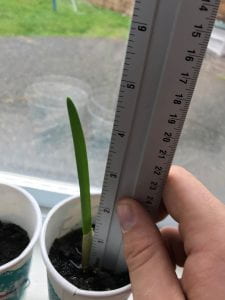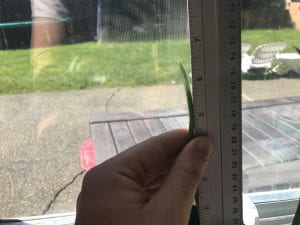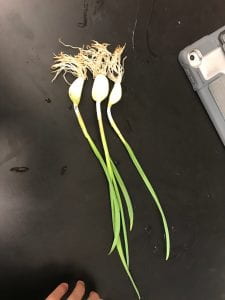Clone Army: Rise of the Garlic
For this unit in Scimatics we learned about mitosis and cells. From watching a bunch of Khan Academy videos, we learned that mitosis is how plants grow by asexual reproduction. With plants you don’t need a male and a female, unlike with people. Mitosis is the process in plants where cells can copy themselves and then continue to grow, and this is how plants grow and get bigger. One of our core competencies for this project was to formulate physical or mental theoretical models to describe a phenomenon. I used this by explaining the process of mitosis using images from our slides:
From here we moved onto how to clone plants using mitosis.
First we tried to clone dandelions. We headed out to a field and dug up dandelions, including the root. Back at school, we cut several sections of root from the plant using a straight cut on top, and a diagonal cut on the tip of each section of root. We then planted our cut sections, putting the diagonal part downward into the soil, with the straight cut facing up so the plant would know which way to grow. We left the root cutting in the soil for two weeks, then pulled them up and made wet mount slides to check for mitosis. To practice making wet mount slides, we used an onion from the store and cut thin slices off to make the slides. There was no evidence of mitosis on the onion slides as the onion was already done growing.
Cloning the dandelions helped us meet the competency of selecting and using the appropriate equipment and technologies to systematically and accurately collect and record data. You can see here our dandelion slides showing mitosis.
After we had practiced cloning a dandelion and making slides, we got to partner up and choose our own plant to clone. My partner for this was Emerson and we chose garlic because it is pretty easy to clone and it grows fast. As you can see from the photos, in a week it grew quite a bit. Our tallest garlic was 10.5″! We had to use a slightly different procedure than with the dandelions. We got a garlic bulb from the store and broke the bulb apart into individual cloves. Then we put the cloves into a growing medium (soil) with the flat part facing down and the pointed part facing up. This made sure we oriented the garlic the right way for the green shoot to come out the top, and the roots to come out of the bottom. You can see this quite well in the photo below. This was where I think we improved on the competency to transfer and apply our learning to a new situation because we aced this part and our garlic grew better than the other groups’ chosen clone plants. The success of our clone also meant that we had met another competency of collaboratively planning, selecting and using appropriate investigation methods to collect reliable data.
After our garlic had been growing for about 10 days, we pulled it out of the dirt and made slides to try to find mitosis. It was difficult to get the right cut for the slide that got the cells that were growing. After several tries, we finally got it and got a good photo of the slide, meeting the competency of using appropriate technology to systematically and accurately collect and record data.
This project took a lot of practice and patience to get mitosis on a slide. Here is a time-lapse video of us doing the process to prepare the slide. Emerson and I worked really well together with each of us doing an equal part in the work. This meets our competency for contributing to care for self, others, community, and world through individual or collaborative approaches.
Here is my project end mind map that shows what I learned in the Clone Army project.
Overall, this was actually a really fun project and I learned not only about mitosis and cloning plants, but I also learned that I am actually pretty good at growing things.







